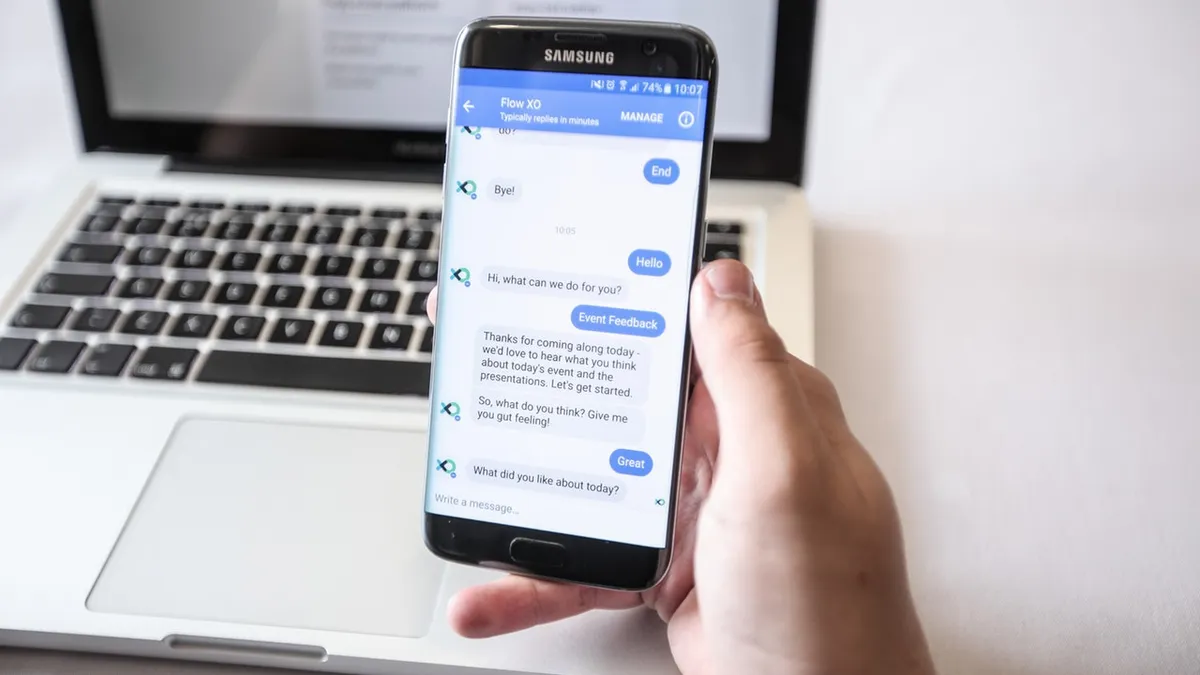The retail sector continues to embrace messaging chatbots, but consumers may not be so enthusiastic about engaging with them just yet.
Back in April 2016, Facebook announced support for chatbot services in Messenger, a move seen as a watershed moment for retailers and brands to use chatbot technology to supplement their customer service efforts, and perhaps even their direct sales efforts.
A lot has happened in the three years since that announcement. Many companies, including Sephora, American Eagle, Louis Vuitton and others, have developed messaging chatbots. Use cases vary, as some retailers and brands employ them for a very limited amount of basic customer service engagement. Others are trying to do more with their chatbots. ProFlowers, for example, placed a buy button on its Facebook chatbot in late 2017.
There continues to be hype around retail applications for messaging chatbots. A Juniper Research study from last year suggested that they can provide benefits that include both cost savings and sales generation, including a projected $112 billion in e-commerce transactions by 2023.
But, are customers ready for more extensive chatbot engagement?
Lack of consumer comfort
Generally, consumer attitudes toward chatbots appear to be less than favorable, according to numerous surveys. A Sitel Group study from late last year stated that 70% of consumers surveyed would rather speak to a human in a customer service scenario than to a bot. Another recent survey from Voxpro found that 68% of consumers still haven’t used chatbots to contact a brand, and that 56% haven’t used chat or automated features because they prefer experiences with real people.
Meanwhile, a Usabilla report from last fall based on a survey of 1,000 consumers is more optimistic about the technological trend. It estimated that 70% of consumers have already used chatbots, and that 54% would choose a chatbot over speaking to a human if it saved them 10 minutes. However, the same report also said that 55% of those surveyed "preferred" to speak with human customer service agents.
Yet another report, based on a Pegasystems survey of 3,500 consumers, showed that 72% found chatbots to be generally helpful, while 58% described their chatbot experiences as "adequate," and 65% said they still preferred to chat with humans.
The combined takeaway: Consumers don’t appear to be all that comfortable with chatbots, even years after the first ones appeared. In some cases, as the Sitel Group study hinted, consumers may not feel that an automated software program can adequately understand, respond to and act on their requests. The Pegasystems report reached a similar conclusion, stating that chatbots are still "too dumb to get the job done." If consumers are that uncertain, it seems unlikely they would shop regularly through chatbots, or trust them with more complex tasks.
Proceed With Caution
Like all technology platforms, chatbots are projected to get better at what they do. Artificial intelligence, machine learning and natural language processing continue to improve, and more of that technology will continue to be integrated into chatbots, making them more intelligent and responsive. It's not all that easy: Training chatbots to become smarter can be a lengthy, frustrating process itself, according to a recent ZDNet story.
Companies deploying chatbots also need to invest in training human agents to work with the technology to enable smooth handoffs between the two. That hybrid solution would make chatbots seem less like isolated point solutions, and more like just one aspect of an interconnected customer service experience.
For the time being, retailers and brands need to be careful how they deploy chatbots, and what the expectations are about what the tech can accomplish.
For example, the Pegasystems survey found that when consumers used chatbots, they're inclined to favor them for quick, relatively simple information requests. Sixty percent of those surveyed said they would use them to track orders, a task many consumers tend to do themselves online already. Fifty-three percent said they would use chatbots to find basic information, and 49% said they would use them to ask basic questions, which sounds very similar to how consumers currently use voice-activated virtual assistants like Amazon’s Alexa.
The emergence of voice-activated virtual assistants like Alexa, which have also been described as voice chatbots, could further complicate matters for the evolution of chatbots, as voice interfaces may play a larger role in direct sales. Retailers could use similar voice technology for shopping search in their own websites and apps, which could limit the role messaging chatbots might play in direct sales.
Ultimately, consumers need to become more comfortable with messaging chatbots for the technology to play a greater role in retail.











